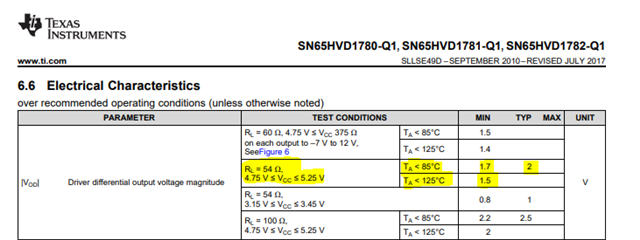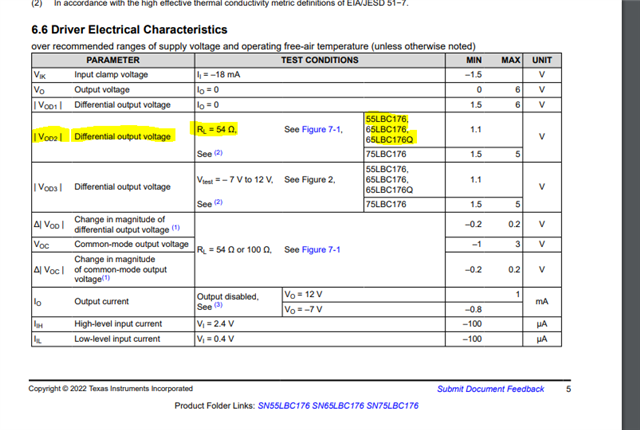Other Parts Discussed in Thread: SN65HVD1780-Q1
Dear team,
We are planning to use SN65HVD1781QDRQ instead of SN65LBC176QDRQ1. We have seen that drive current is 38mA compared to 60mA in SN65LBC176QDRQ1.
We understand that this will affect the max cable length. What would be the max cable length if we use SN65HVD1781QDRQ with 38mA?
I kindly request you to let us know if there any other impact apart from max cable length.





